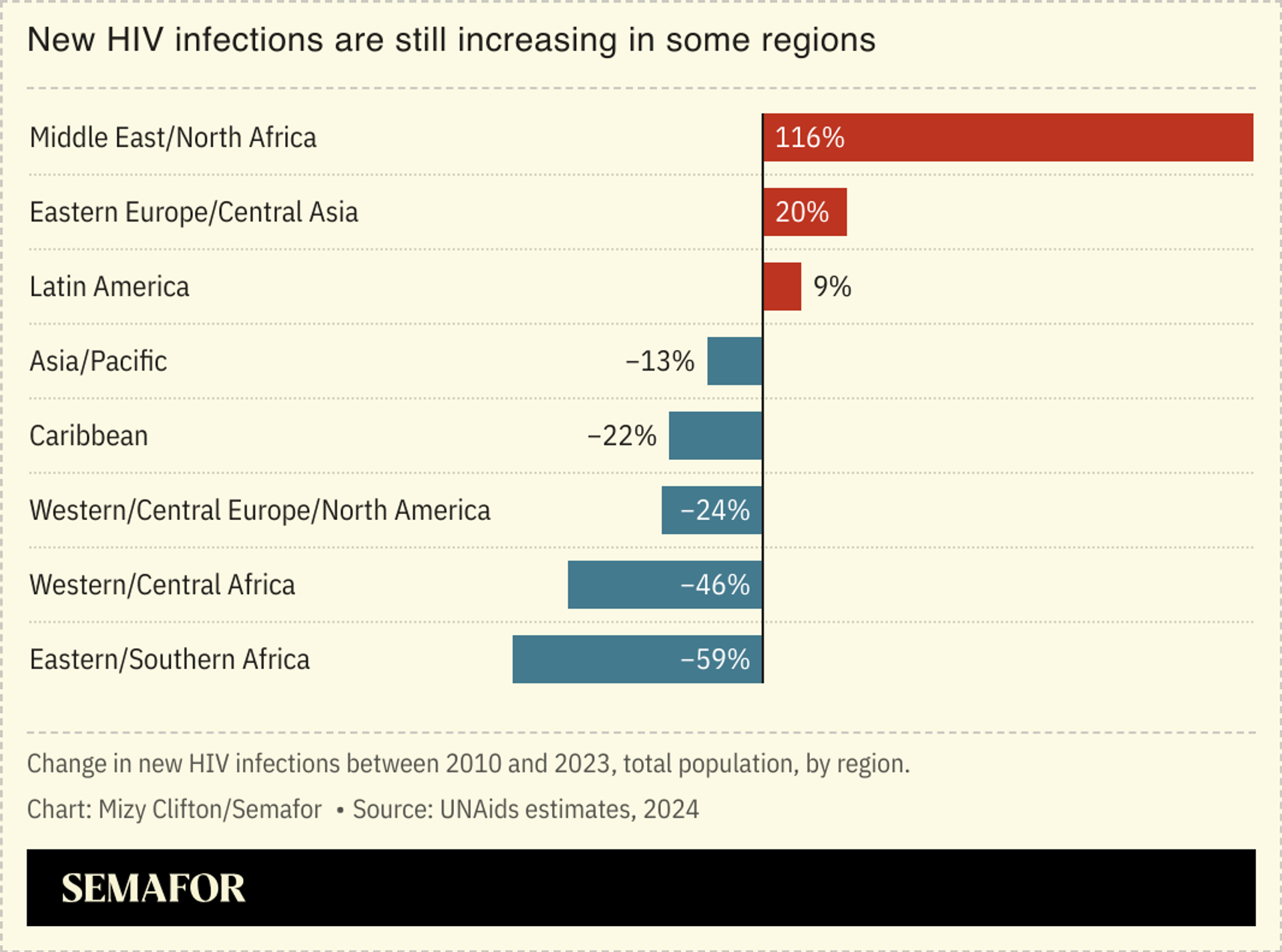The News
New HIV infections in 2023 fell by 39% globally compared to 2010.
The majority of new infections were recorded outside of sub-Saharan Africa for the first time since the HIV pandemic began more than three decades ago — and the number of infections in the region is now 56% lower than in 2010, according to a UNAIDS report released Wednesday.
The drop reflects the progress made in curbing infections, particularly with the mass uptake of drugs to prevent infections, collectively known as PReP. But the report warned that the shifting focus from sub-Saharan Africa to the rest of the world suggests a “lack of comparable progress,” and that the world is “off-track” to bring AIDS-related deaths below 250,000 by 2025.

SIGNALS
First reduce infections, then find a cure, UNAIDS says
Ahead of the 25th International AIDS Conference this week, scientists announced that a seventh known individual appeared “cured” of HIV after receiving a stem cell transplant. Experts aren’t exactly sure why: The donor wasn’t immune to HIV, suggesting that “something complex is going on” in the immune system’s response, which, if elucidated, could be replicated by future drug therapies, The Economist wrote. And while an HIV vaccine or cure would represent a “potential breakthrough” in treating the disease, it would not necessarily end the pandemic — rather, the “primary objective” of public health officials should be to keep cutting new infections, UNAIDS argued in its report.
Certain communities face barriers to treatments
There are serious gaps in access to HIV prevention strategies and treatments, particularly regarding condom provision. Global procurement and distribution of condoms in low- and middle-income countries declined by 27% on average between 2010 and 2022, despite being the most low-cost means to prevent infections, UNAids noted. HIV-related stigma also persists, and people living with HIV are more likely to delay seeking care until they are very ill. Women and girls in particular face barriers to treatment: Despite women accounting for 44% of all new infections in 2023, they remain “underserved by problematic and patchy rollout of PrEP,” The Lancet noted in March.

